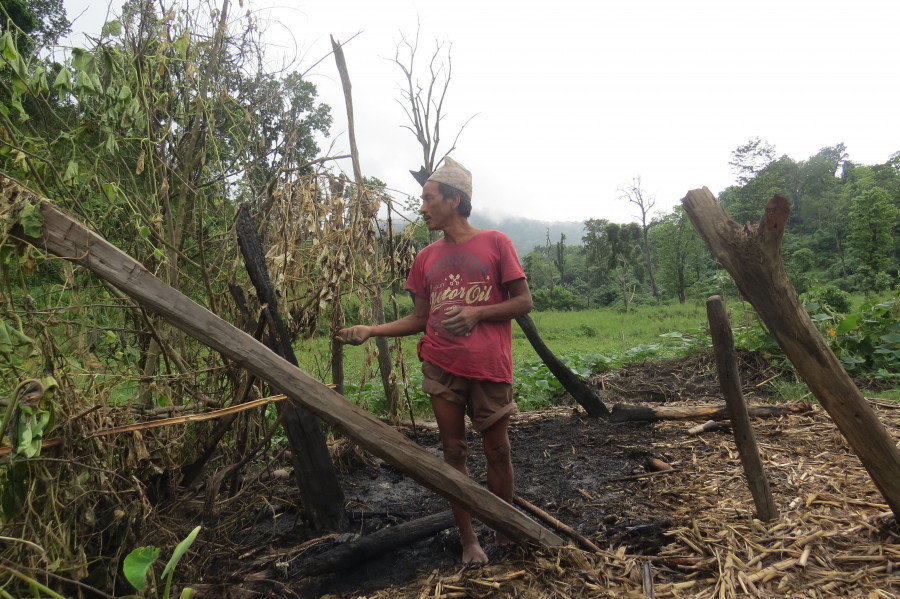Columns
Why current conservation models are flawed
Top-heavy conservation models have little regard for locals. This has to change if conservation is to succeed.
Amish Raj Mulmi
In a series of articles in 2018, author Shradha Ghale identified several key issues with conservation practices in Nepal: that it is a centralised, top-heavy model with little regard for indigenous and local people; that the Army, entrusted with protecting conservation areas, has committed human rights abuses in the name of anti-poaching and curbing wildlife crime; and that imported models of conservation were implemented without much thought for traditional ways of living, and rural folk were instead blamed for deforestation and various environmental crises.
In 2019, Buzzfeed News revealed in a detailed investigation that, among other excesses across the world in the name of conservation, the World Wildlife Fund (WWF) helped cover up the custodial death of Shikharam Chaudhary in 2006, who had been accused of burying a rhino horn in his backyard (the horn wasn’t found). ‘WWF’s staff on the ground in Nepal leaped into action—not to demand justice, but to lobby for the charges to disappear. When the Nepalese government dropped the case months later, the charity declared it a victory in the fight against poaching’.
This, then, is the background against which we must view the forced eviction of 10 Chepang households from Chitwan National Park by park authorities and Army personnel. Two houses were burnt down, and eight others destroyed by using elephants—the imagery recalls feudal practices at their worst. Park authorities said the Chepangs had encroached upon the national park; if so, the question arises, will the authorities now target the more-than-4,000 homes currently said to be encroaching upon the land? The mayor of Madi has also alleged that park authorities have obstructed the resettlement of households in the past. And finally, the displaced households said they were ready to move, but were waiting for the dry season.
Indigenous voices have said the Chepang homes were destroyed because they are ‘a soft target’ and are ‘poor and voiceless’. Indeed, the Chepang community are among the most marginalised and poor ethnic groups in Nepal. The 2012 Nepal Multidimensional Social Inclusion Index listed them among the 10 ethnic groups with the lowest standard of living. The 2011 census counted their population as just shy of 70,000, and almost 80 percent of all Chepang households were destroyed during the 2015 earthquake. The Chepangs’ semi-nomadic existence has long been a subject of discussion; the British resident Brian Hodgson in an 1857 article wrote: ‘“They toil not, neither do they spin:” they pay no taxes, acknowledge no allegiance, but, living entirely upon wild fruit and the produce of the chase, are wont to say that the Rajah is Lord of the cultivated country, as they are of the unredeemed waste’.
As deplorable as the state’s vicious treatment of the squatters is, especially during a pandemic and the rains, the response also follows in line with top-heavy conservation practices in Nepal and across the world that pay little attention to traditional relationships between humans and animals, and rely instead on neocolonial ideas built upon a distrust of the local. This goes beyond just indigenous people. One of the most famous examples in recent times comes from the Kaziranga National Park in Assam, India, whose rangers had shoot-on-sight orders upon encountering poachers. Although a success story in rhino conservation, the issue highlighted the clear discord about the role of local people in conservation practices. As anthropologist Radhika Govindrajan has recorded in the hills of Kumaon where depredation by wild boars is common but colonial laws of conservation forbid villagers from killing the pigs, rural folk are imagined as a savage predatory unit ‘declared unworthy of trust’. This relates to several rural areas in Nepal where wild animal depredation is common, but few solutions are devised that can allow locals to view the animals beyond an adversarial lens.
This is not to suggest conservation is ill-intentioned; if anything, at a time when the earth is undergoing an Anthropocene extinction, conservation practices are needed more than ever. But one-size-fits-all models are not the answer. One successful example in recent times from our region is the conservation of Amur Falcons in the Indian state of Nagaland. At one point, a hundred thousand falcons were hunted in just 10 days. Now, local ecotourism models centred around the falcon itself have succeeded in reducing hunting practices, and instead created a welcome partnership between locals and conservationists. The success of this model suggests local issues will require localised problems.
Unfortunately, such a vision does not seem to have proliferated among the authorities or conservation bodies protecting our national parks here in Nepal. Rather, the burning down of the Chepang homes in Kusumkhola—a ruthless act that is simply a display of state power than anything else—conveys the Nepali conservation model following the same social hierarchy that dominates the rest of Nepali society. Since the Chepang are politically insignificant, they can be treated with disdain.
What if we could develop a model that is decentralised, and considers local issues at par with the necessity to protect animals? As of now, Ghale writes, ‘the National Parks and Wildlife Conservation Act allows the government to declare any site a protected area, with no obligation to consult the local and indigenous communities who live in that area’. Perhaps those who are involved—from authorities to international conservation bodies like the WWF—need to rethink this completely. The belief that our jungles belong only to the government is a historic legacy of the Rana era built upon the monarchy’s turn towards conservation. As such, it is the locals and the marginalised who bear the brunt of policies. But such a model inevitably creates deep social fissures that breed resentment, and further endangers the goal of protecting the wilderness.




 5.27°C Kathmandu
5.27°C Kathmandu















